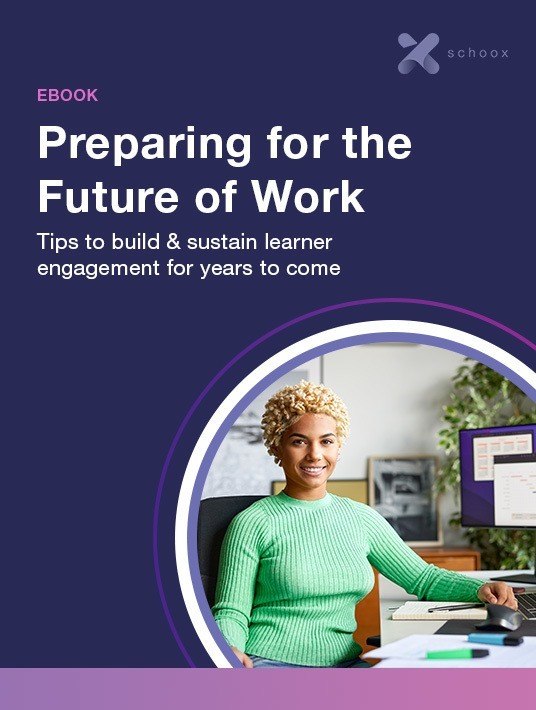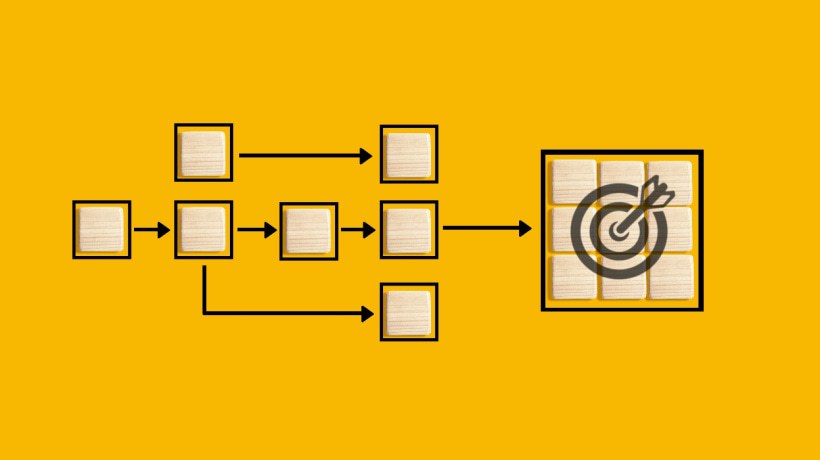Creating A Connection To Boost L&D Engagement
Quite often, when L&D teams think about learner engagement, they focus on what happens within the learning environment itself. Whether it's a course, a class, a video, etc., all the effort is placed on making those experiences as engaging as possible. Designers ensure the visuals are strong and there's enough interactivity to keep people's attention. Painstaking effort is given to selecting the right fonts, colors, and branding. These are all essential elements, for sure. But, if your learners don't already have a connection to the learning before the experience even starts, that effort may be for nothing.

What's In It For Me?
Learners coming in cold to any content represent an uphill battle for engagement. If they don't know why they're taking the learning, why it's important, and what it means to them, their engagement levels don't start at zero—they're in negative numbers. This means all your fonts, graphics, and interactions are fighting to get learners not to hate the experience instead of fostering growth, development, and performance.
It all starts with the big picture. Learning must be aligned with business goals. This is what makes it possible to build any context and relevance. This alignment defines what learning means for the business and what it means for employees. Being able to tell a story that shows a direct correlation between the learning program's objectives and the business's goals puts the learning in a much better position in the learners' minds, rather than "we need you to complete this."
Strong alignment between learning and the business allows programs to be built with learners' roles, goals, and interests in mind. It also helps L&D teams speak the same language as the business, keeping everyone on the same page and pointed in the same direction. It creates clear expectations for learners as to what they should know and be able to do as a result of the learning program, how that helps them, and how that helps the business.
Ultimately, L&D teams need to be able to answer the age-old question, "What's in it for me?" Learners always ask this question, overtly or subconsciously, and they need and deserve an answer. Without this answer, even the best content from world-class instructional designers could be viewed as obtrusive, irrelevant, and even a waste of time.
Make It Personal
For learning to have a fighting chance to capture people's hearts and minds, L&D teams have to get personal. Just think about any interaction you may have in your own life, such as a retail experience, an interaction with technology, or even a visit to the doctor. In every case, a more personal interaction is seen as vastly better than an impersonal one. I want my navigation app to take me to restaurants nearby, not hundreds of miles away. I want my doctor to know my medical history. I like getting music and TV recommendations based on what I enjoy. There are few occasions when the word "impersonal" is used as a positive description. Learning is no different. Personalized learning is an extension of the "What's in it for me" conversation and can provide an environment where there is engagement from the very beginning. Personalized learning can be expressed in the form of:
- Personalized Content: Providing learning experiences based on an employee's professional and personal needs and interests
- Accessibility: Making learning accessible in a form and time frame best for the employee
- Modalities: Creating learning experiences in a variety of modalities so that the experience can fit both the needs of the learners and the needs of the content itself
- Learning Styles: Providing at least some self-paced learning, giving learners autonomy and a sense of ownership over their learning.
- Language: Delivering learning in the languages that match your learning audiences is a critical piece of personalization.
Ideally, the L&D team will employ tools that capture relevant learner information that can then be turned into personalization and recommendations. The more automated this process is, the less friction there is for learners.
On top of this data and information, collecting input from learners before, throughout, and after learning programs are rolled out is crucial. This is a vital source of knowledge about what works and what doesn't from the learners' perspective. However, simply collecting feedback is not enough. It must be acted upon to demonstrate to learners that their input matters. Otherwise, it is seen as lip service and will work against engagement.
It's Not Just What They Learn But How
While we can't necessarily get inside the mind of each learner to figure out what will work best, it's important to consider generally how people's minds work and how they learn. You don't need to be a neuroscientist to adopt some of these principles. Cognitive learning strategies encourage learners to reflect on the material and how to apply it to current and future situations to improve problem-solving and critical thinking skills. This can transform learning from generic transactional experiences and turn them into relevant, actionable activities. Learners need to discover how to learn and solve problems flexibly.
This means opportunities to reflect on what they've learned and practice using new skills and knowledge. Learners' brains need to focus on experiences with dynamic spatial and temporal structures. Not everything can be learned from a course with a quiz. These processes are critical for working memory to succeed. They make the learning real for learners, allowing them to apply what they learn confidently. Studies like this study published by Neuron and this study published by the Malaysian Journal of Learning and Instruction have shown that learners presented with neurocognitive-based learning show far better results with attention, working memory, and even mood.
Finally, when it comes to driving learning engagement prior to learning experiences, many organizations have the ideal partner already available to them — the Marketing team. If the company has a Marketing department—or even just one Marketing professional—there's an opportunity to leverage their expertise in generating engagement. Their entire purpose is to get people excited about products and services. Simple examples of this could include:
- Company emails to increase awareness and excitement
- Launch parties for important learning initiatives
- Swag that's gifted upon course completion
- Branded badges that tie into the company's colors, mascot, teams, etc.
Generating initial excitement and a continuous drumbeat around learning can only increase engagement and its success. So, work with them to figure out the best strategies for marketing learning to your audiences before, during, and after critical initiatives.
Conclusion
Download Preparing For The Future Of Work: Tips To Build & Sustain Learner Engagement For Years To Come today to get your employees hooked on professional development and prove your training ROI.









